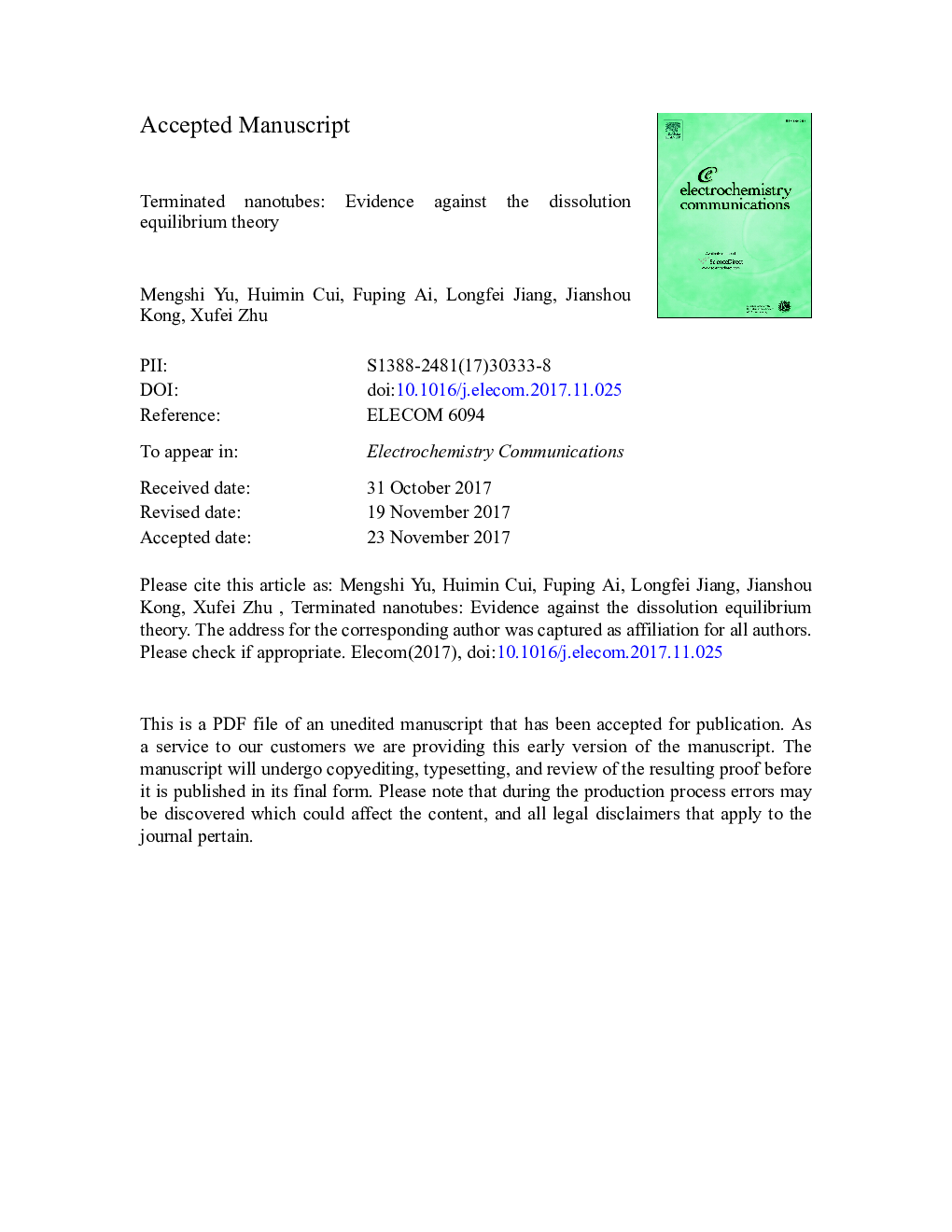| Article ID | Journal | Published Year | Pages | File Type |
|---|---|---|---|---|
| 6601018 | Electrochemistry Communications | 2018 | 22 Pages |
Abstract
Electrochemical anodizations of metals and alloys have attracted increasing attention as a method to fabricate highly ordered porous films. The popular formation mechanism of porous anodic oxides is dissolution equilibrium theory, which indicates that the equilibrium between oxide growth and dissolution via digging manner at the bottom of pores is the major cause of tubular structure. Here, terminated nanotubes with sealed bottoms were discovered while titanium foils were anodized under different conditions. In one terminated nanotube, oxide at the bottom does not grow whereas dissolution from electrolyte still exists. According to the estimated dissolution rate, it only takes approximately 20Â s for the bottom of the terminated nanotube to be penetrated absolutely based on dissolution equilibrium theory. Apparently, most anodizations in this work all last for more than 20Â s after the appearance of terminated nanotubes. Therefore, the bottom of the terminated nanotube is bound to be penetrated absolutely. Nevertheless, its bottom is sealed completely, namely the experimental results are not consistent with theoretical results based on dissolution equilibrium theory. Hence, terminated nanotubes are evidence against the dissolution equilibrium theory.
Keywords
Related Topics
Physical Sciences and Engineering
Chemical Engineering
Chemical Engineering (General)
Authors
Mengshi Yu, Huimin Cui, Fuping Ai, Longfei Jiang, Jianshou Kong, Xufei Zhu,
